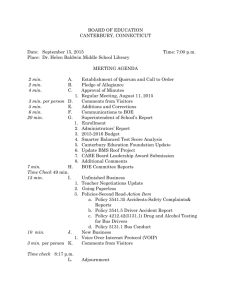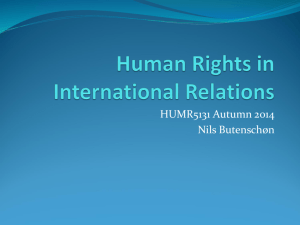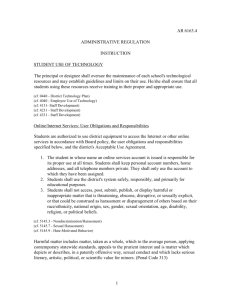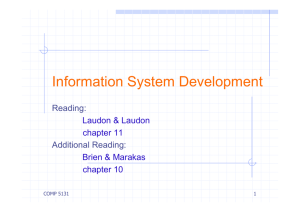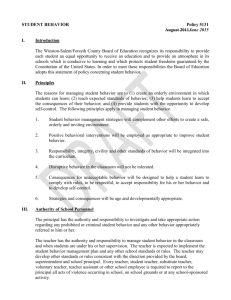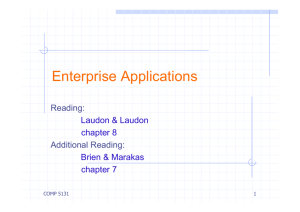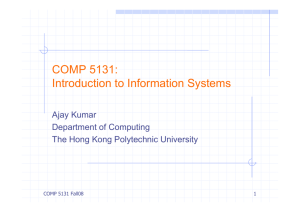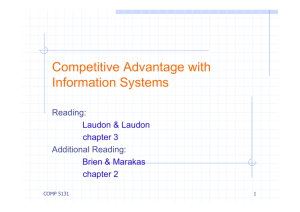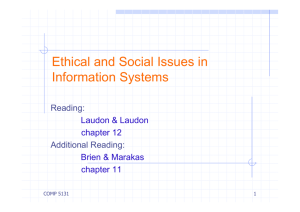HUMR 5131 - Commitment Compliance 2
advertisement
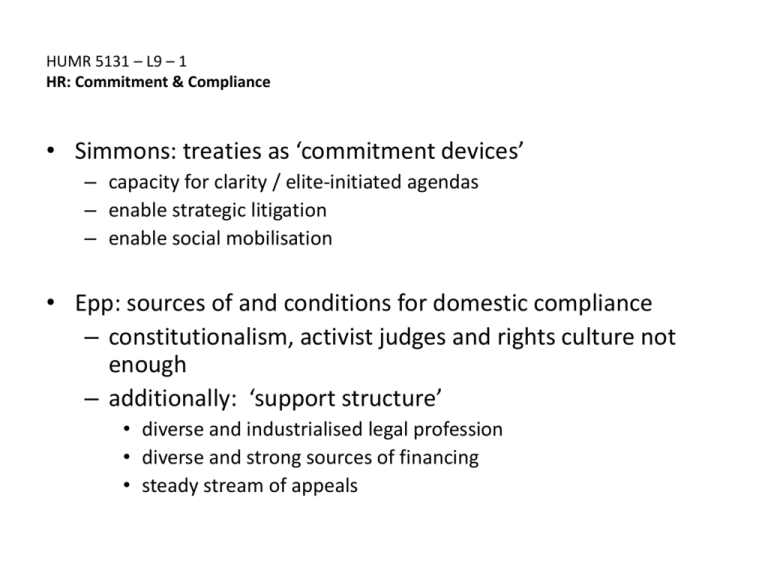
HUMR 5131 – L9 – 1 HR: Commitment & Compliance • Simmons: treaties as ‘commitment devices’ – capacity for clarity / elite-initiated agendas – enable strategic litigation – enable social mobilisation • Epp: sources of and conditions for domestic compliance – constitutionalism, activist judges and rights culture not enough – additionally: ‘support structure’ • diverse and industrialised legal profession • diverse and strong sources of financing • steady stream of appeals HUMR 5131 – L9 – 2 HR: Commitment & Compliance Risse, Ropp and Sikkink: ‘the spiral model’ ‘socialisation’ of international HR norms into domestic practice • diffusion of HR by way of ‘transnational advocacy networks’ • three mechanisms (processes) of socialisation • five stages (in ‘world time’) • method: comparing paired empirical cases, two selected rights (right to life, freedom from torture) in 2 x 5 countries • research goals: – empirical: understanding conditions for compliance and implementation – theoretical: impact of principled ideas in international politics HUMR 5131 – L9 – 3 HR: Commitment & Compliance the spiral model: diffusion of HR by way of ‘transnational advocacy networks’ • putting norm-violating states on the international agenda in terms of moral consciousness-raising • empowering and legitimating the claims of domestic opposition groups (mobilising domestic opposition) • challenging norm-violating governments by creating a transnational structure pressuring simultaneously from above and from below actors in networks: international community, UN system, IGOs, INGOs, liberal states, domestic NGOs and opposition groups HUMR 5131 – L9 – 4 HR: Commitment & Compliance the spiral model: three ‘mechanisms or ‘processes of socialisation’ of HR norms into domestic practice: • Instrumental adaptation and strategic bargaining – ‘talking the talk’: dictators that sign but do nothing more • Moral consciousness-raising, argumentation, dialogue and persuasion – talk as discourse: not merely information exchange, but implying definitions and identities: shaming and blaming • Institutionalisation and habitualisation ideal types, may take place simultaneously, differs according to underlying modes of social action and interaction HUMR 5131 – L9 – 5 HR: Commitment & Compliance the five stages of the spiral model: • repression and activation of network – gathering of information, international attention • denial – international condemnation, domestic opposition bypass the state and search international allies • tactical concessions – cosmetic changes, but a strengthened domestic opposition: the ‘boomerang effect’ also risk of backlash: cycles of violence • prescriptive status – ratification and implementation; government accept validity of HR • rule-consistent behaviour – internalisation of HR norms in all government practices HUMR 5131 – L9 – 6 HR: Commitment & Compliance the spiral model: alternative explanation in 1999 book • the primacy of domestic politics, i.e., strong correlations between economic growth and democratisation • self-criticism in new (2013) book – underspecification of processes and scope conditions • now: 4 mechanisms of compliance: coercion (force), sanctions and rewards, persuasion (discourse), capacity-building – limited statehood (‘failed states’) For discussion: How and why does a member of the military who has ordered extrajudicial executions in the past decide to stop this practice? HUMR 5131 – L9 – 7 HR: Commitment & Compliance Promoting human rights from below: fighting child prostitution in Thailand • • • • local knowledge v universalising treaty texts UN: an agent of globalisation NGO activists: the experts in the global langauge of HR treaties the Convention on the rights of the Child: – ‘a child means every human being below the age of 18 years’ – fixing the boundaries of childhood and setting the parameters of an acceptable childhood Compare: ‘It is the duty of every person to aid, support and protect his children and it is the duty of children to honour their parents always, and to aid, support and protect them when they need it.’ HUMR 5131 – L9 – 8 HR: Commitment & Compliance Promoting human rights from below: fighting child prostitution in Thailand • CRC Art 34: ‘State parties undertake to protect the child from all forms of sexual explotation and abuse’ • Living in Ban Nua – – – – – A poor and unrooted community Kinship, filial duty and social obligations extremely important Prostitution pays five times more than begging All children between 10 and 15 ‘have guests’ Total denial of psychological and physical damage HUMR 5131 – L9 – 9 HR: Commitment & Compliance Promoting human rights from below: fighting child prostitution in Thailand • CRC: ‘the best interest of the child’ and ‘due weight to views of the child’ • No welfare state, no social security safety net • Parents emphasise own understandings and rationalisations; unable to see the selling of their children in a wider political (and medicinal) context • Outside activists unable to appreciate children’s role in household context and Art 34 discourages them from doing so • Who can make an informed decision? What to do? HUMR 5131 – L9 – 10 HR: Commitment & Compliance promoting human rights: is the international HR movement part of the problem? Yes, because: • it occupies the field of emancipatory possibility – fights against e.g. poverty and corruption are turned into rights struggles • HR analysis results in too narrow framing – focus on procedure at the cost of substance; exaggerated focus on the state • HR talk generalises too much (dichotomises) – from many shades of experiences and nuanced roles to victim or perpetrator • HR talk particularises too much – focus on individuals, and as rights-holders • HR rallying promises more than it can deliver (utopianism) • HR work creates false solidarities by representing everyone
